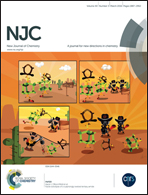Boron-doped diamond as a sensor for the classification of carbamate pesticides using a chemometric approach
Abstract
This work shows for the first time the use of a boron-doped diamond (BDD) electrode as a sensor to extract voltammetric information about the oxidation of different carbamate pesticides (aldicarb, carbaryl, carbofuran, methomyl, and propoxur), for the purpose of discrimination and classification using a chemometric approach. Extracted information was used as input data for principal component analysis (PCA) and k-nearest neighbours (k-NN) analysis. However, because the current intensity for carbamate oxidation is proportional to the pesticide concentration, the discrimination and classification are difficult because the data collected for the same pesticide at different concentrations vary significantly. Therefore, a pre-processing method (baseline correction + normalisation between 0 and 1) is proposed before the PCA to normalise the data and eliminate the concentration effect on the voltammetric current signal, thereby facilitating each pesticide to be discriminated. Satisfactory discrimination was achieved using PCA, and then, a supervised classification using k-NN was performed to test the ability of the proposed method to identify three real pesticide samples in aqueous medium. The supervised model did not misclassify any of the samples, demonstrating the reliability of the proposed method for identifying carbamate pesticides in aqueous medium and its utility for qualitatively evaluating pesticides for environmental control purposes.


 Please wait while we load your content...
Please wait while we load your content...